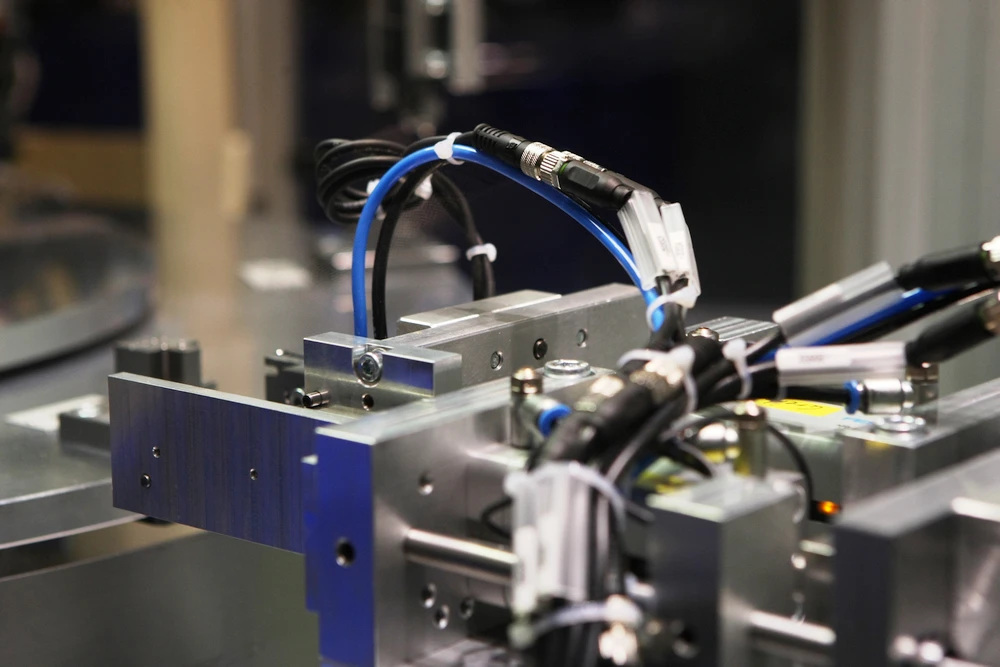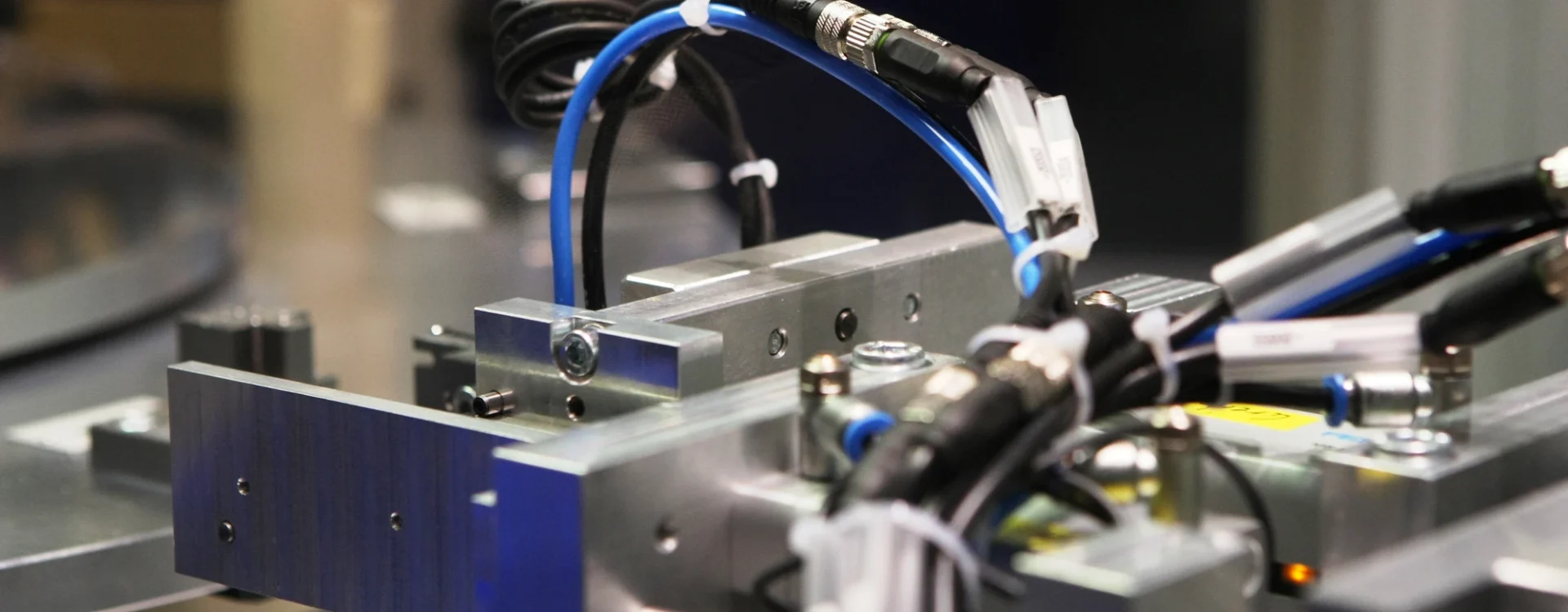LEAK TEST SYSTEMS WITH AIR:
PRESSURE DROP, PRESSURE RISE, PRESSURE DIFFERENCE
In principle, three different pneumatic measuring methods are used for leak testing systems with air: the pressure drop method, the pressure rise method and the differential pressure method. A leak test consists of four steps: Filling, steadying, measuring and venting. In the filling phase, the test specimen is pressurized with the test medium and disconnected from the pressure source after reaching the test pressure or a defined time. The settling phase compensates for temperature differences and turbulence created during filling and allows time for narrow cross-sections to penetrate and for seals to set.
SERVICES AT A GLANCE
- Leak testing systems with pressure decay method
- Leak test systems with pressure rise method
- Leak testing systems with differential pressure method
- Testing, preliminary tests and validation
- Specifications, engineering and consulting
- Commissioning and training on site
- Support, maintenance, service, documentation, certification & more

LEAK TESTING SYSTEMS WITH PRESSURE DECAY METHOD
In the pressure decay method, the test part is filled with compressed air or another gas at a defined overpressure. For a meaningful measurement, it is necessary to wait for the pressure parameters to stabilize after filling the test specimen. The pressure in the test part is measured over a defined time interval and it is checked whether there is a leak that exceeds the permissible leakage rate.
The leak rate is calculated by multiplying the measured pressure change by the internal volume of the test part and dividing it by the length of the time interval. The theoretical detection limit for the pressure drop method is 1 ∙ 10-3 mbar∙l/s.
LEAK TESTING SYSTEMS WITH PRESSURE RISE METHOD
In the pressure increase method, a vacuum is created in the test specimen. This measures how much the pressure inside the test part increases in a certain time interval. The leak rate is calculated by multiplying the internal volume of the test part by the change in pressure and dividing by the measuring time. The pressure rise method is 5 times more sensitive than the pressure drop test. The theoretical detection limit is 1 ∙ 10-3 mbar∙l/s. In contrast to the differential pressure test, temperature fluctuations have no influence due to the generation of a vacuum in the test part. At the same time, however, it also limits the pressure difference that can be used for the test specimens. This is a maximum of 1 bar - the difference between the atmospheric pressure outside the test part and the vacuum inside. Particular problems can arise with easily deformable test parts (such as those made of plastic) or those with a large volume, as the differential pressure vessel needs to be as large as possible.
LEAK TESTING SYSTEM WITH DIFFERENTIAL PRESSURE METHOD
The differential pressure method also measures the pressure differences. The pressure in the test part is compared with the pressure in a reference object whose tightness is known. Any pressure differences are then measured with a differential pressure sensor for the duration of a defined time interval. The leak rate results from the product of the pressure difference times the internal volume of the test part divided by the time interval of the measurement. The detection limit of the differential pressure measurement is 10 times better than the pressure drop test and is 1 ∙ 10-4 mbar∙l/s. The theoretical detection limit is 1 ∙ 10-3 mbar∙l/s. Problems can arise with easily deformable test parts (such as those made of plastic) or those with a large volume, as the differential pressure vessel needs to be as large as possible.
